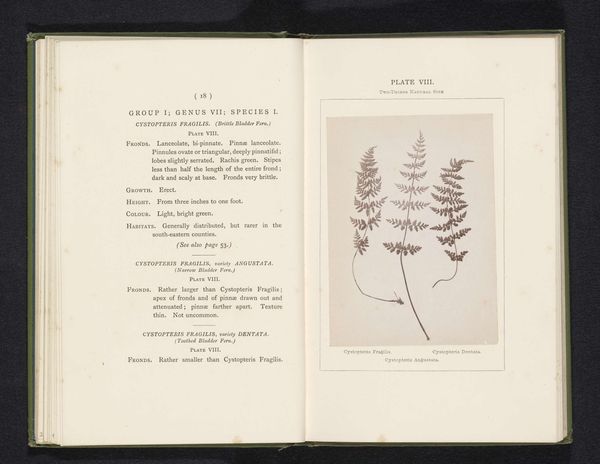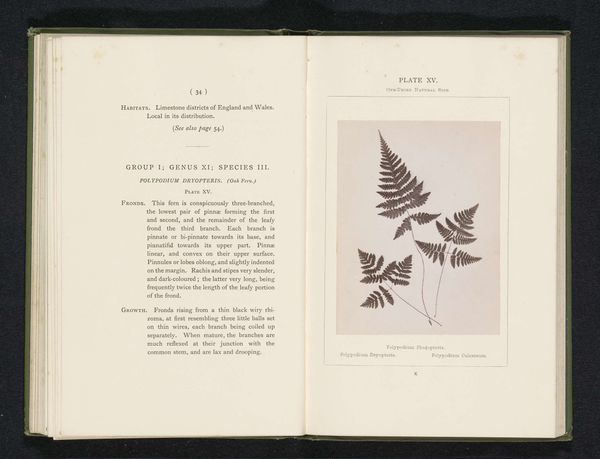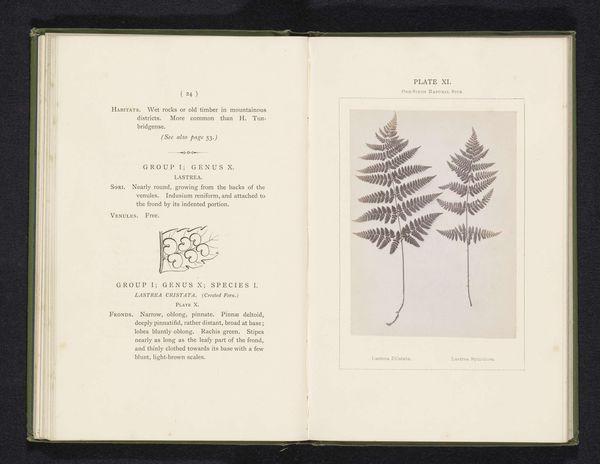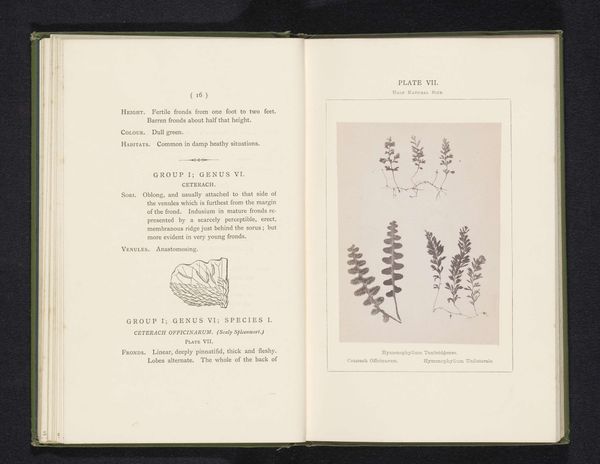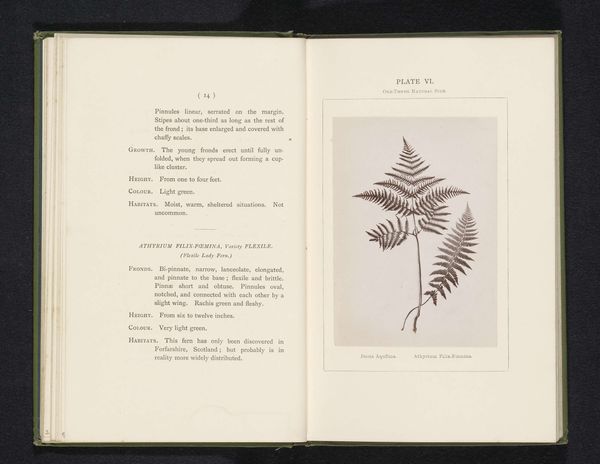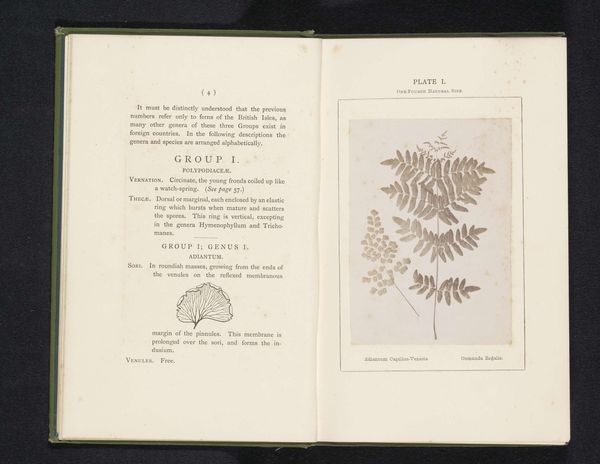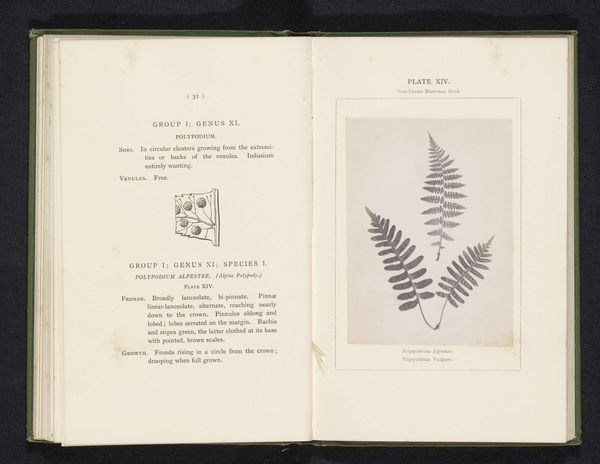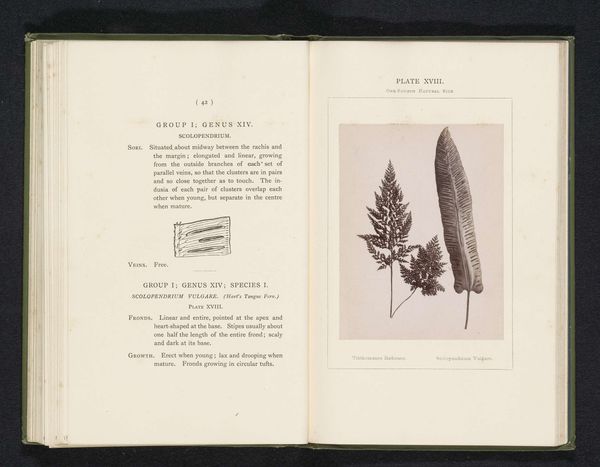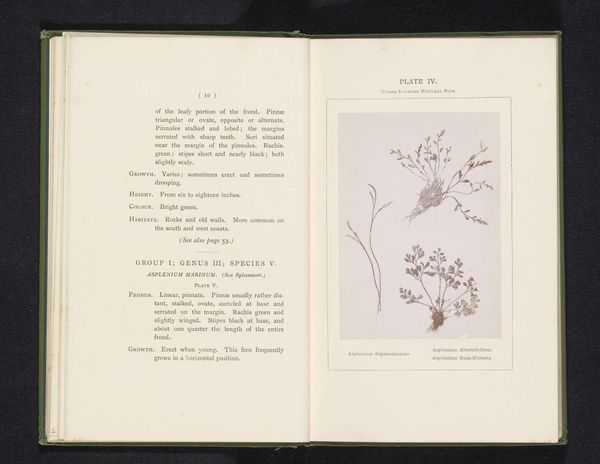
print, photography
# print
#
photography
Dimensions: height 118 mm, width 86 mm
Copyright: Rijks Museum: Open Domain
Curator: The delicacy of the leaves almost makes them appear like fine lace. Editor: Indeed. The print before us, "Bladeren van drie soorten Cystopteris," dating from before 1877 and credited to Sydney Courtauld, uses photography to capture the intricate details of these ferns. What's striking is the way it’s presented as almost scientific illustration, with its directness. Curator: Ferns in Victorian art and literature frequently embodied the feminine and mysterious, often associated with secluded and enchanting spaces. They’re a symbol of secret knowledge, wouldn't you agree? Editor: Perhaps, but I’m captivated by the grayscale tonal range achieved. Courtauld isolates each individual frond against a plain background, highlighting the geometric structure and feathery edges of each Cystopteris specimen. There's an almost mathematical precision despite the natural subject. The focus appears incredibly crisp for photography of the period, enabling one to study its physical structures with precision. Curator: The visual simplicity is precisely what allows the layers of meaning to emerge. Each type of fern—Cystopteris montana, Cystopteris Regia, and Cystopteris Dickieana—carries its own symbolic weight, its origins steeped in botanical folklore, adding to the visual text’s meaning and impact. It's a very popular plant to have a reference to from this period. Editor: I notice also that the ferns are arranged as though in a delicate dance of repetition and mirroring. And I can see where Victorian interest in plant anatomy provided a structured framework within natural philosophy. It gives off an ethos of careful analysis. Curator: For me, the composition conveys both fragility and resilience. These ferns represent endurance. A Victorian's eye toward mortality adds another emotional stratum when you know they're working with a still life. Editor: Absolutely. This composition, despite its documentary appearance, does a remarkable job playing the hand of artistic intent. A great display for how photography could transform scientific observation into aesthetic experience.
Comments
No comments
Be the first to comment and join the conversation on the ultimate creative platform.
